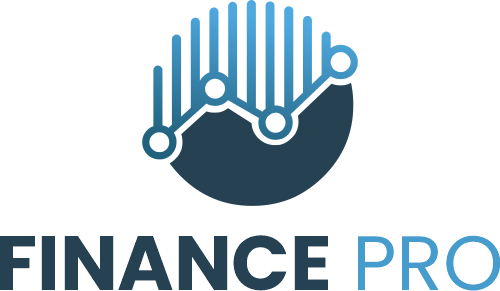The cryptocurrency market has undergone a fundamental transformation, with automation now dominating trading activity across major exchanges. Industry data reveals that over 70% of institutional crypto trading volume flows through automated systems, while retail adoption accelerates as technologies become more accessible. The emergence of bot trading crypto platforms has democratized institutional-grade strategies, enabling individual investors to compete in markets that operate continuously. This shift fundamentally changes how participants approach portfolio management and trade execution.
Understanding this evolution provides essential context for investors seeking to navigate modern digital asset trading effectively.
The rise of algorithmic trading in cryptocurrency markets
Manual trading approaches face limitations in markets operating without interruption. Human traders require rest, experience emotional responses to volatility, and cannot monitor dozens of pairs across multiple exchanges simultaneously. These constraints create disadvantages when competing against automated systems processing data and executing trades in milliseconds.
Algorithmic trading systems deliver key advantages:
- Continuous Market Monitoring: Bots analyze price movements and indicators 24/7, capturing opportunities during overnight hours when manual traders are offline.
- Emotion-Free Decisions: Algorithms execute trades based on data analysis, eliminating fear-driven selling or greed-fueled buying.
- Superior Speed: Trading bots respond to market changes in microseconds, essential for arbitrage strategies capitalizing on brief price discrepancies.
- Consistent Application: Automated systems maintain discipline by following established rules without deviation.
Market data supporting the automation shift
According to cryptocurrency market analysis, the digital assets sector continues expanding as participants embrace technological solutions. Trading volumes across major exchanges reflect increasing automation adoption, demonstrating how algorithmic systems have become essential infrastructure in modern crypto markets.
Platforms now offer pre-configured strategies developed by quantitative research teams, lowering barriers to entry for investors without programming expertise.
Core technologies powering modern trading bots
Modern trading bots rely on interconnected technologies enabling market analysis and rapid execution. AI and machine learning algorithms process historical data to identify patterns and predict movements with greater accuracy than manual analysis.
API integration connects bots to exchanges, allowing secure communication between automated systems and trading platforms. Users maintain custody of funds in their exchange accounts while granting trading permissions through API keys that exclude withdrawal capabilities.
Trading bots follow this decision sequence:
- Data Collection: Continuously gather price data, volume metrics, and technical indicators from connected exchanges.
- Signal Generation: Process data against criteria to identify trading opportunities matching strategy parameters.
- Risk Assessment: Evaluate position sizing, available capital, and portfolio exposure before executing trades.
- Order Execution: Submit orders through API connections, often splitting larger positions to minimize market impact.
From manual execution to automated intelligence
Contemporary systems incorporate adaptive intelligence that adjusts to market conditions, recognizes shifts between trending and ranging markets, and optimizes parameters based on performance data. This enables bots to handle complex strategies across multiple timeframes and trading pairs simultaneously.
Popular strategies for automated crypto trading
Automated systems implement various strategies for different market conditions. Understanding these approaches helps investors select appropriate configurations.
Grid trading establishes networks of buy and sell orders at predetermined intervals. A grid bot might place buy orders every 2% below Bitcoin’s current price and sells every 2% above. As price oscillates, the bot systematically purchases during dips and sells during rebounds, accumulating profits from volatility. This strategy performs optimally in sideways markets with established ranges.
Dollar Cost Averaging (DCA) automates systematic cryptocurrency purchases at regular intervals regardless of price, spreading investment across multiple entry points. Advanced DCA bots adjust purchase amounts based on drawdowns, buying more aggressively when assets trade below recent averages.
Market-neutral strategies generate returns independent of market direction through balanced exposure across asset classes, offering stability during volatile periods.
Strategy selection depends on market characteristics:
- Trending Markets: Momentum strategies capitalize on sustained movements by entering positions aligned with trends.
- Range-Bound Markets: Grid and mean reversion strategies profit from oscillation between support and resistance.
- High Volatility: Conservative strategies with tighter controls help preserve capital during intense swings.
Matching strategy to market conditions
Successful trading requires recognizing regime changes and adjusting accordingly. Bull markets favor growth-oriented approaches maximizing exposure, while sideways markets reward range-trading strategies. Advanced platforms offer multiple concurrent strategies, diversifying approach and reducing single-strategy dependence.
Risk management in automated trading systems
Automated trading carries inherent risks requiring proper management frameworks. Portfolio diversification across multiple cryptocurrencies reduces single-asset volatility exposure, while position sizing rules prevent individual trades from jeopardizing capital.
Stop-loss mechanisms automatically exit positions when losses exceed thresholds, limiting downside during unexpected movements. Take-profit orders lock in gains by closing at price targets, preventing the common mistake of holding too long.
Backtesting evaluates strategy performance against historical data before deploying capital. Comprehensive testing should include various market conditions, ensuring adequate performance during both favorable and challenging periods.
Regulatory oversight continues evolving. The SEC and CFTC have issued joint guidance regarding digital asset trading on registered exchanges, establishing frameworks promoting market integrity while enabling innovation.
Essential risk controls include:
- Maximum Drawdown Limits: Automatically pause trading if portfolio value declines beyond thresholds, preventing catastrophic losses.
- Position Size Constraints: Limit trade size relative to capital, ensuring diversification and preventing over-concentration.
- Exchange Connectivity Monitoring: Implement safeguards detecting API failures or latency, preventing execution errors from technical issues.
- Performance Review Protocols: Establish regular reviews to analyze performance, identify deteriorating results, and adjust or pause ineffective approaches.
Conclusion: The future of crypto trading automation
Automated trading systems have reshaped cryptocurrency markets, establishing new standards for execution speed and operational efficiency. As technology advances, the gap between manual and algorithmic capabilities will expand, making automation increasingly essential for competitive market participation.
Market maturation suggests continued democratization of institutional-grade tools, with platforms offering strategies at accessible prices. This evolution benefits retail investors gaining access to quantitative approaches previously available only to hedge funds.
Key considerations for investors:
- Start Small: Begin with limited allocation, gradually increasing as you gain confidence in performance and understand risk characteristics.
- Continuous Learning: Markets evolve constantly, requiring ongoing education about strategies, technologies, and dynamics affecting trading.
- Diversification Across Strategies: Deploy multiple non-correlated approaches to smooth returns and reduce single-strategy dependence.
- Regular Monitoring: Periodic review ensures strategies perform as expected and align with evolving objectives.
The cryptocurrency market’s 24/7 nature and volatility create an environment suited to algorithmic approaches. Investors embracing these technologies thoughtfully, with proper risk management and realistic expectations, position themselves to compete effectively in automated digital asset markets.
The above information does not constitute any form of advice or recommendation by London Loves Business for investment, nor is it intended as investment advice, financial advice, or trading advice. Cryptocurrency mining and staking involves risk. There is potential for loss of funds. It is strongly recommended you practice due diligence, including consultation with a professional financial advisor, before investing in or trading cryptocurrency and securities.

